Happy #Eclipse2017 month! Everyone in the continental United States will see at least a partial solar eclipse on August 21, so even if you’re not traveling to experience “totality,” you’ve got something to look forward to.
Here at GSC, all employees have been issued a pair of quality “eclipse glasses” so they can safely look at the Sun during the partial eclipse. However, a colleague wanted to use binoculars to get a closer look and asked me if that was possible. Keep in mind, you absolutely can not use eclipse glasses with any optical aid — the filter material needs to completely cover the front of a telescope or binoculars in order to be safe. I did have access to solar filter material, however, so all we had to do was create suitable “cells” to hold it over the binoculars.
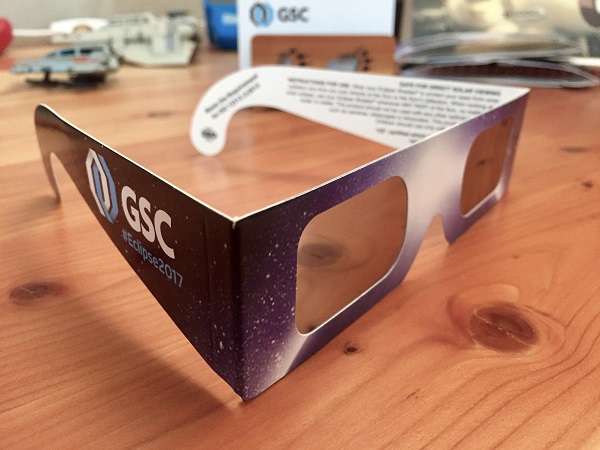
Eclipse glasses are for naked-eye viewing only; never use them with a telescope or binoculars
Our first lunchtime project (using manilla folders, a pair of scissors, and tape) worked, but it was a pretty flimsy setup. During our initial test, I was afraid the construction would not hold up over time, which could result in disaster for the viewer. We needed to create something much more rigid and durable; fortunately, we have access to SOLIDWORKS software and 3D printers!
Using digital calipers, I took a few measurements of the binoculars in question. From there, I sat down with SOLIDWORKS and within 15 minutes I had the design I needed! I saved out an STL file for each of the two parts and they were on the 3D printer the next morning.
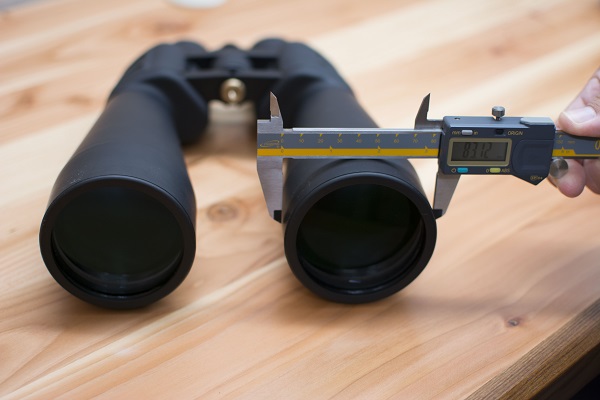
Digital calipers make quick work of capturing dimensions
The design and assembly are fairly straightforward, and are best explained with these images I created in another 15 minutes with SOLIDWORKS Composer:
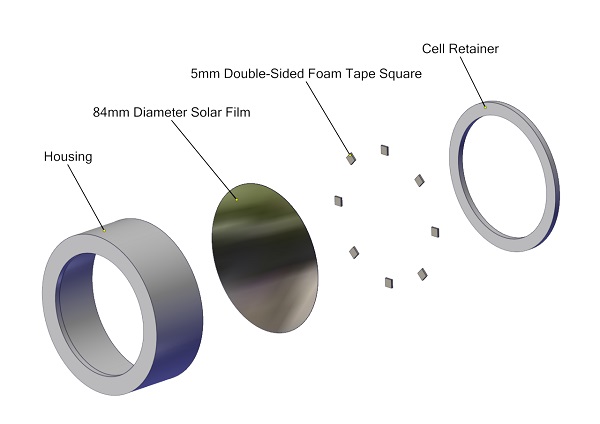
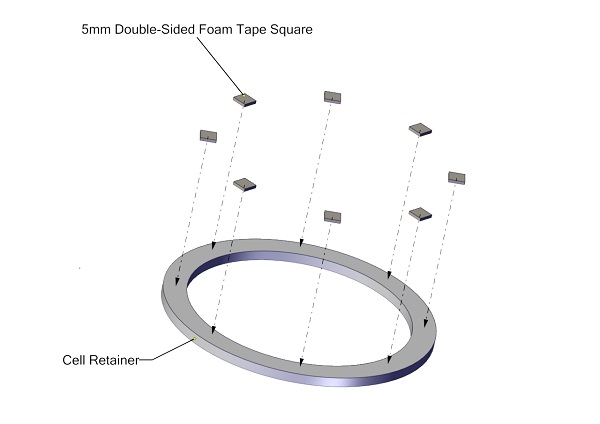
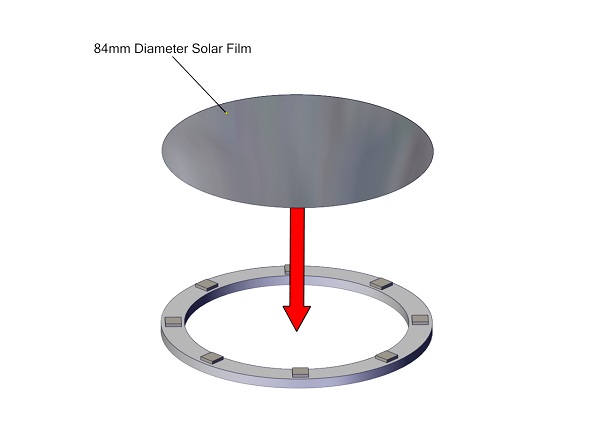
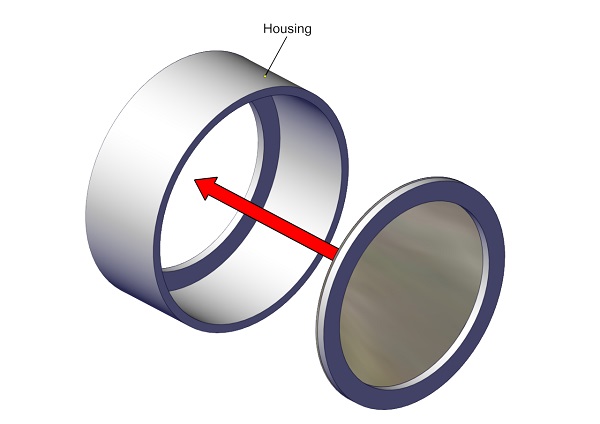
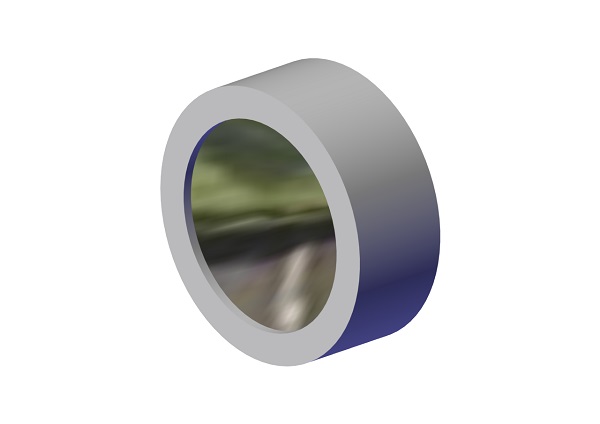
This entire project, from design to final assembly, took less than an hour of interactive time. The 3D print of the two pairs of parts was done overnight — I didn’t bother to write down exactly how long the builds took, but I know it was a few hours max. Think about the power this represents!
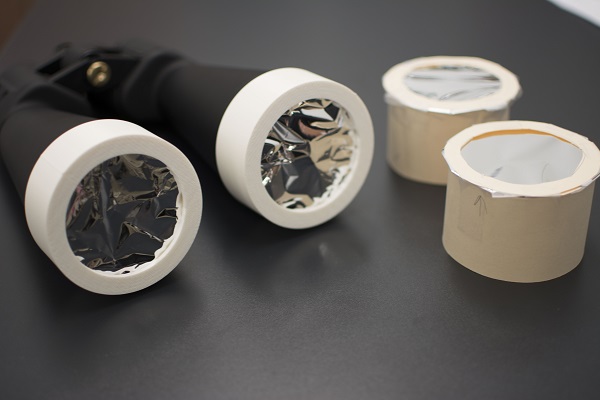
The final result! Much more durable (and safer) than the original paper build, but took the same amount of work time to create. The wrinkles in the filter material do not affect performance.
If you’re going to make your own solar filters for your optics, it is absolutely critical that you get filter material from a reputable source, and handle it according to the manufacturer instructions. Two such materials are Baader Planetarium AstroSolar Visual Solar Film and Thousand Oaks Optical Solar Filter Sheet; in our case, we used the Baader material (a complete list of good material options can be found on the American Astronomical Society’s dedicated page). I also advise that you add about 1mm clearance so the cell slips onto the binocular easily; use some sheet foam on the inside of the cell wall to make for a snug fit.
No matter where you are on August 21, I hope you will take the time to look up and experience the solar eclipse. If you would like advice on viewing the eclipse, or about making your own solar filters, contact me and I’ll be happy to help!
PS: Use the free app called “Totality” from Big Kid Science to find out when the eclipse will happen at your location!
Share
Meet the Author

